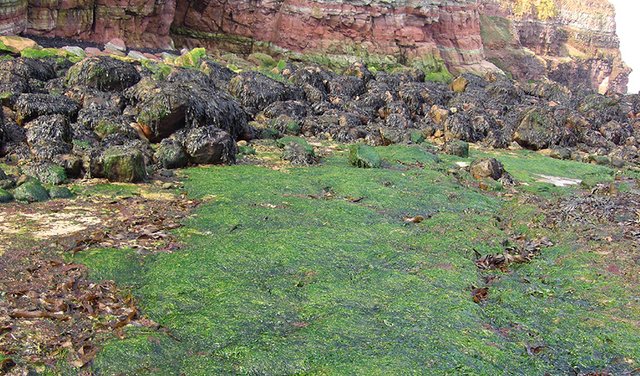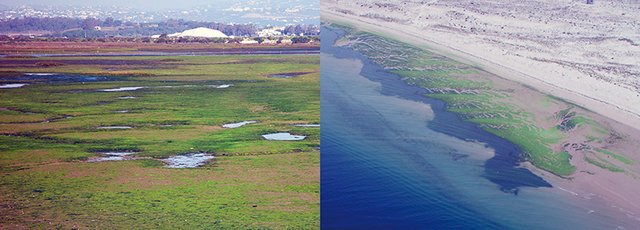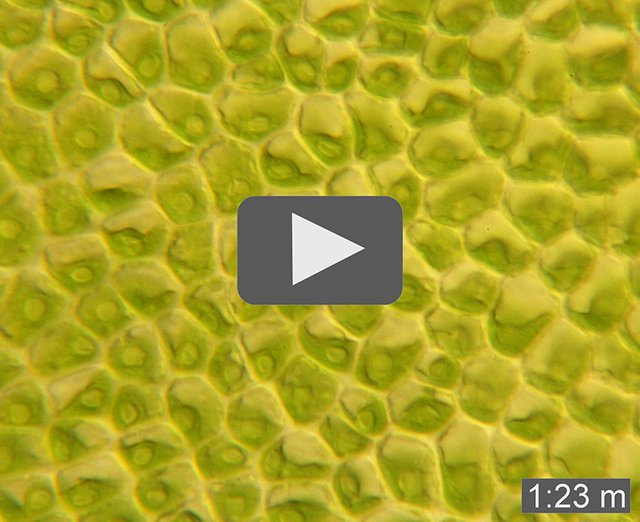More images / video of the alga Ulva mutabilis
 Bacteria-free Ulva mutabilis-cultures develop into an undifferentiated mass of cells (left). Only the association with appropriate bacteria allows Ulva mutabilis to form its natural morphology. The bottom right hand part picture of the panel shows normally developed young algae, which later form a lettuce blade (“sea lettuce”). Photos and © Taghreed Alsufyani, Anne Weiss und Thomas Wichard, University Jena.
Bacteria-free Ulva mutabilis-cultures develop into an undifferentiated mass of cells (left). Only the association with appropriate bacteria allows Ulva mutabilis to form its natural morphology. The bottom right hand part picture of the panel shows normally developed young algae, which later form a lettuce blade (“sea lettuce”). Photos and © Taghreed Alsufyani, Anne Weiss und Thomas Wichard, University Jena.
 Many Ulva-species settle on rocks in the intertidal zone of the small island of Helgoland in the North Sea (Germany) and shape the scenery. Photo and © Thomas Wichard, University Jena.
Many Ulva-species settle on rocks in the intertidal zone of the small island of Helgoland in the North Sea (Germany) and shape the scenery. Photo and © Thomas Wichard, University Jena.
 Nutrient-rich water from agriculture and densely populated areas probably favour the rapid growth of Ulva. It can result in blooms of floating algae along coastal areas such as observed at the Portuguese coast in 2007 (aerial view on the right). Researchers are interested in the drivers of these algal blooms and whether Ulva can be used as bio-filter for wastewater in future applications. Photos and © Erik-Jan Malta, Instituto de Investigación y Formación Agraria y Pesquera (IFAPA) in Spain.
Nutrient-rich water from agriculture and densely populated areas probably favour the rapid growth of Ulva. It can result in blooms of floating algae along coastal areas such as observed at the Portuguese coast in 2007 (aerial view on the right). Researchers are interested in the drivers of these algal blooms and whether Ulva can be used as bio-filter for wastewater in future applications. Photos and © Erik-Jan Malta, Instituto de Investigación y Formación Agraria y Pesquera (IFAPA) in Spain.
Photos of the press release "Alga of the Year 2015: The Sea Lettuce Ulva only gets into shape with the right bacteria
Copyrights
Use of the images is only permitted in connection with reporting on the topic ‘alga of the year 2015’ and only if the photographers are acknowledged in the format: first name, second name, institution. Commercial use of the images is not permitted.
download more images (details, habitat, video)

